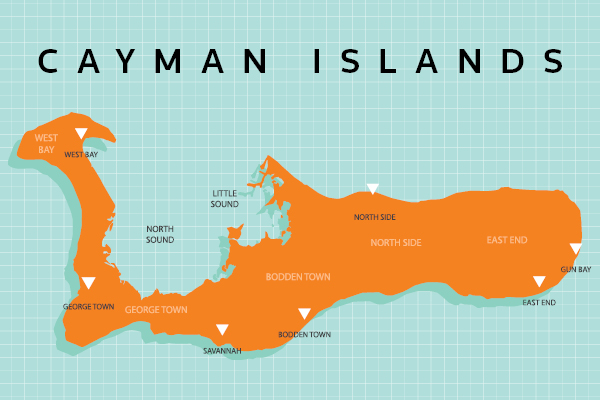
Alibaba. Baidu. Tencent. Xiaomi. Zhaopin.Didi Chuxing.
What do these global Chinese powerhouses and household names have in common?
They are also Cayman Islands companies.
So what was and is the driving force for these (and many other companies, whether start-ups or other household names) to use the Cayman Islands as their jurisdiction of choice, particularly in Asia?
Flexibility. Efficiency. Certainty. Market acceptance. Tax neutrality.
All of these, whether on their own or together are some of the factors, but simply put, in our experience, many companies regardless of their industry and business focus look to establish themselves using Cayman Islands structures because they enable such companies to attract investor capital from all over the world and to use that capital to support their growth and development from the founder’s ideas into a global business juggernaut.
Most of this investor capital is sourced from private equity and venture capital funding at an early stage together with the usual contributions from the founders’ own connections, friends, and family. Cayman provides an efficient, clear, flexible and investor-friendly corporate law regime which is globally accepted, including by all of the world’s major securities exchanges.
Cayman structures can be a powerful tool providing start-up companies with the right corporate and governance framework that will allow them to attract and maintain investor funding, incentivise management and promote the objectives of key stakeholders. Once the business has developed at an proper stage for the Company’s founders and management to consider monetising their investment, then Cayman structures can facilitate an easier transition to this next level as they are also the preferred form of structure for prospective mergers, takeovers or initial public offerings.
For example, from Jan. 1, 2008 to June 30, 2018 there have been approximately 850 IPOs of Cayman companies on the Hong Kong Stock Exchange (HKSE) and Cayman companies represent approximately 53.6% of the listed public companies on HKSE.
The most popular Cayman structure remains the Cayman exempted company and this popularity has continued to increase. According to statistics available at the time of writing from the Cayman Islands Registrar of Companies, as at the end of September 2018, there were 89,552 active exempted companies representing a 7% growth rate in the number of active companies since the end of September 2017.
Typically, exempted companies attract investor capital by issuing different classes of preferred shares that provide different economic rights and certain board and shareholder veto/control rights as well as certain enhanced rights to participate in any takeover offer, merger or IPO. This is a well-trodden path for many companies, particularly for those business sectors like Telecommunications, Media and Transport (TMT) where significant early-stage investment is required. The Cayman Companies Law (2018 Revision), which is the main statute that regulates Cayman Islands companies, is not prescriptive as to how exempted companies are managed and operated (apart from a handful of certain statutory rights) as this is set out under the memorandum and articles of association (M&A) of the relevant company. Whilst many companies operate using a market standard “plain vanilla” form of M&A, the M&A can be tailored to build in a bespoke level of optionality. For example, provisions can be developed concerning the powers and scope of authority of the directors, shareholder consent or veto rights concerning certain corporate actions to be performed by the board of directors or the Company, share transfer restrictions (tag and drag provisions, pre-emption rights or rights of first refusal), economic (dividend, distribution and liquidation preferences) and information rights to be enjoyed by the shareholders.
For Cayman venture capital and private equity fund managers, the Cayman exempted limited partnership (ELP) (also known as the “GP/LP” in the Asian market) is still the most popular structure as a result of its inherent flexibility and because it is well understood by both Asian and international promoters, managers and investors. As at the end of 2017, there were approximately 22,346 active ELPs registered in Cayman. Although not finalised for 2018, based on the latest monthly statistics available from the Cayman Registrar, 2018 looks to be another banner year with the number of active ELPs expected to reach around 26,000.
A lot of the historical impetus for the use of the ELPs has been because of its use in the North American market for tax (i.e. pass through benefits to minimise exposure to double taxation) and regulatory reasons. Although the same tax and regulatory drivers do not apply in Asia, ELPs have nonetheless become the default standard for PE/VC investments due to their popularity and use by global PE asset management firms and institutions. Because the ELP is a contractual (partnership) arrangement between the general partner (who manages and operates the ELP and its investments (akin to the board of directors of a company) and the limited partners (investors), there is even more optionality and flexibility as the parties can set out whatever contractual terms and conditions they require in the limited partnership agreement. For example, capital account provisions that allow funds to flow in and out of the ELP without the restrictions and procedures associated with administering share capital (such as issuing, redeeming, or repurchasing shares and updating registers of members) (all of which are relevant for a Cayman exempted company).
For hedge fund managers, the Cayman corporate fund structure remains the preferred structure and the Cayman segregated portfolio company (SPC) is particularly popular because of the cost and administrative economies of scale benefits that can be achieved by administering multiple funds within the SPC. An SPC is a type of Cayman exempted company that can establish individual segregated portfolios, each of which is segregated from each other segregated portfolio within the SPC and has its own assets and liabilities attributed to that particular portfolio and not to any other portfolio within the SPC. Provided that the SPC is properly administered in compliance with the Cayman Companies Law, then the liabilities of a portfolio are segregated from the other portfolios within the SPC. This type of company structure has become extremely popular in Asia (particularly in China) in recent years and most Asia based funds practitioners have become very well versed in their use.
Many asset managers appreciate that the SPC enables them to establish a platform that they can use to offer multiple fund products with different investment strategies to different investors whilst at the same time minimising the need to go through separate onboarding and account opening procedures with service providers such as administrators, custodians, prime brokers and banks because such service providers can be mandated to service the SPC and each of its portfolios. Once the SPC is established, the creation of a segregated portfolio can be done by way of the board of the SPC approving a board resolution establishing the new segregated portfolio and the relevant offering documentation (such as a form of appendix or addendum explaining the specific fund terms relevant to that portfolio) and potentially short form contracts confirming the application of the relevant service provider services in respect of that new portfolio. This approach reduces the potential administrative burden of entering into separate contractual arrangements, multiple turns of supplying Know Your Client (KYC) documentation and multiple turns of following separate application or onboarding procedures for these service providers for separate standalone investment entities or structures.
We are also seeing a shift in the Asian market towards the use of the Cayman SPC for PE/VC investments. In these circumstances, asset managers appear to accept the relative trade-off in flexibility over an ELP to take advantage of the SPC benefits to minimise having to go through separate onboarding and bank account opening procedures which could delay or prevent a manager (and investors) from being in a position to take advantage of a particular investment opportunity. Managers are also responding to investor demand as anecdotally we have noticed that investor requests for SPCs’ to be used by such managers appear to be increasing. The use of a Cayman SPC for these types of investments does require careful consideration of whether the use of an SPC would be appropriate, how the SPC is to be operated and maintained and matters such as how the flow of funds is to be regulated given the inherent procedural restrictions of a company structure over a Cayman ELP or Cayman Limited Liability Company. Careful drafting of the SPC’s M&A would be required in order to facilitate these arrangements.
The Cayman Limited Liability Company (LLC) is another type of Cayman company that enables investors to invest in an entity with corporate legal personality (unlike the ELP which is a contractual arrangement) but with capital accounts found in partnership arrangements such as ELPs, allowing funds to flow in and out of the Cayman LLC again without the restrictions and procedures associated with administering share capital. Another distinguishing advantage for this type of structure is that, for joint venture or co-investment structures, the obligations and duties for the operators of the Cayman LLC can be drafted in order to suit the specific commercial requirements of each party to the joint venture. The Cayman LLC agreement can authorise each party to act in its own interests as opposed to joint ventures structured through companies (where directors have fiduciary duties that require them to act in the interests of the company as a whole, rather than the joint venture parties who appointed them, which is a more realistic governance approach).
Since the Cayman LLC was introduced in 2016 approximately 1500 Cayman LLCs have been incorporated as at the end of September 2018. Significantly, there has been an approximate 132% increase in the number of Cayman LLCs incorporated since September 2017 with demand in Asia underpinning some of this growth. We expect that the overall use of Cayman LLCs will continue to increase as stakeholders become more familiar with their advantages.
The Cayman companies regime also facilitates the creation of other company types, including the Cayman Foundation Company, which is used for family office and private client asset management, succession planning and philanthropic purposes and which regime came into force in October 2017.
With a range of structures available, each with their own characteristics, Cayman remains a pre-eminent jurisdiction facilitating the growth and development of business and global commerce. As always, early legal and tax advice is critical to determine which structure is appropriate.



